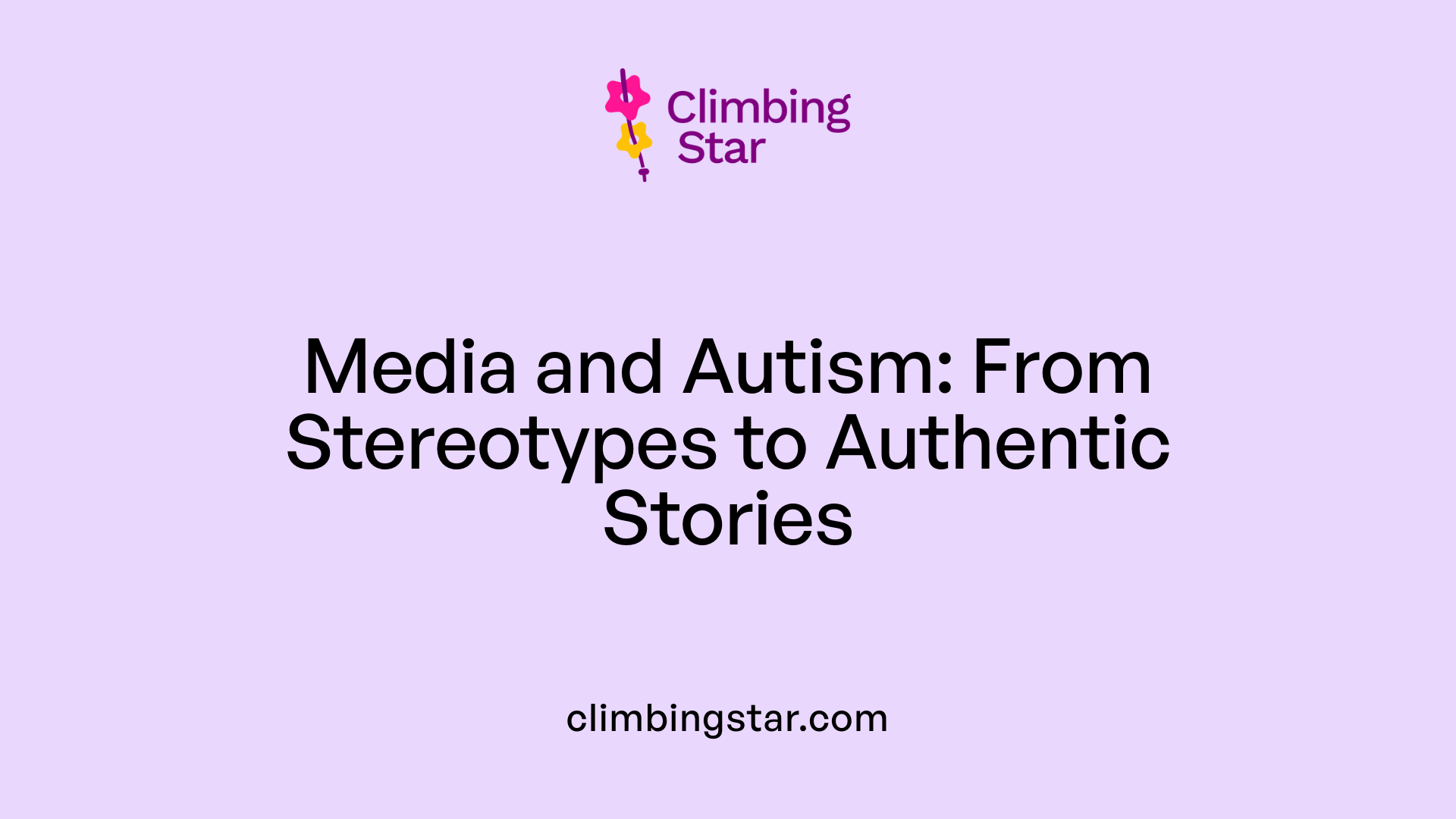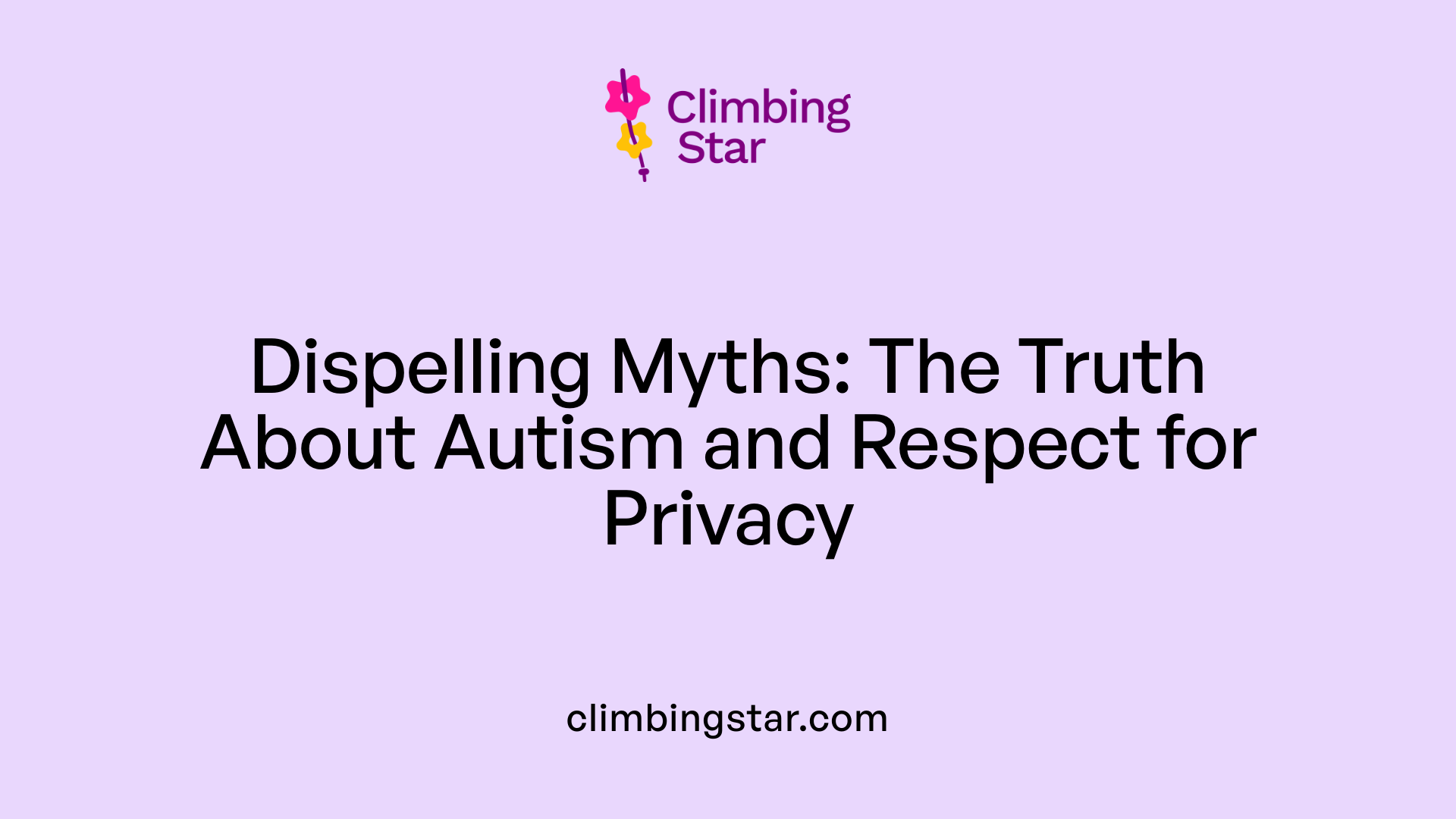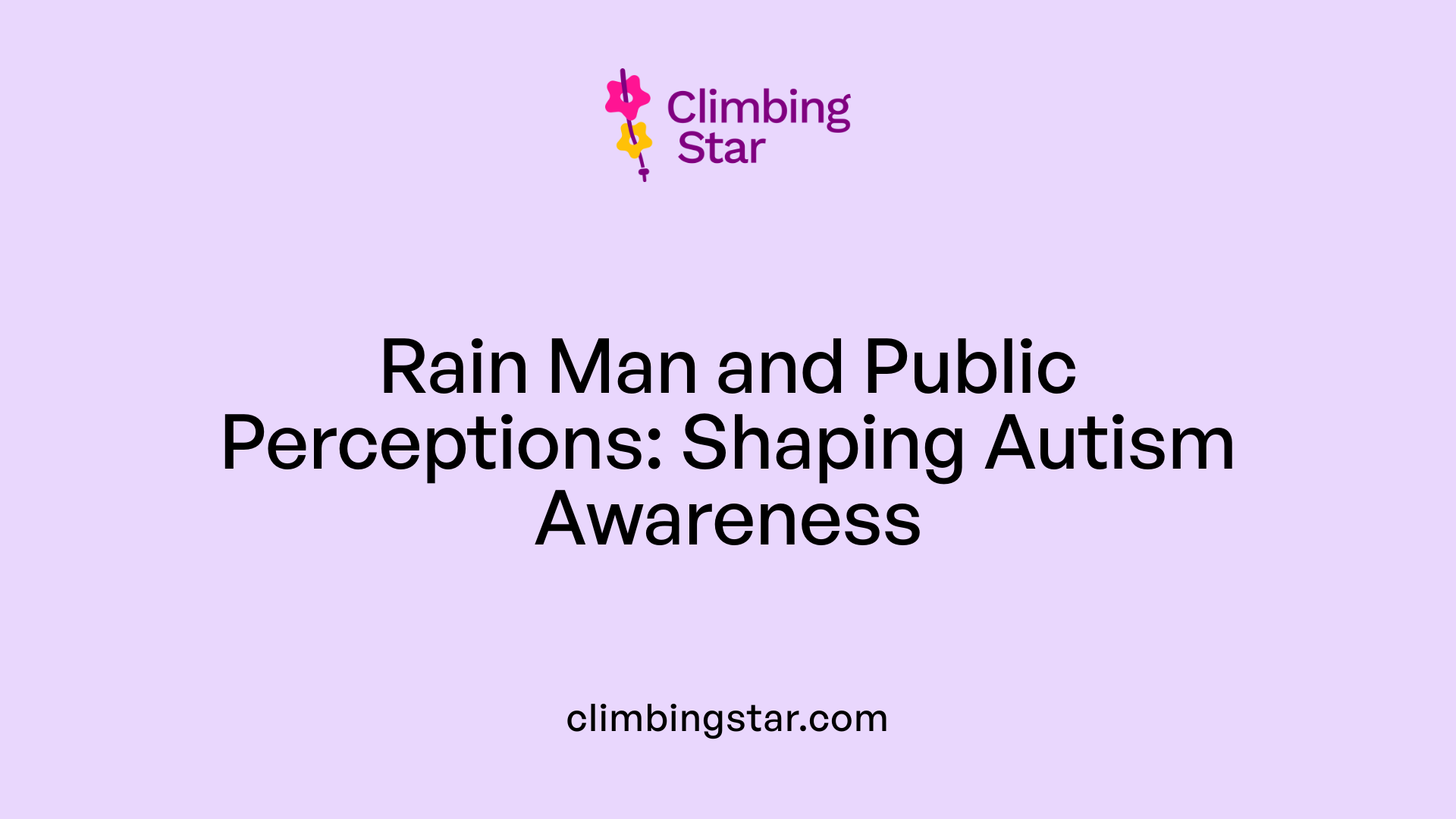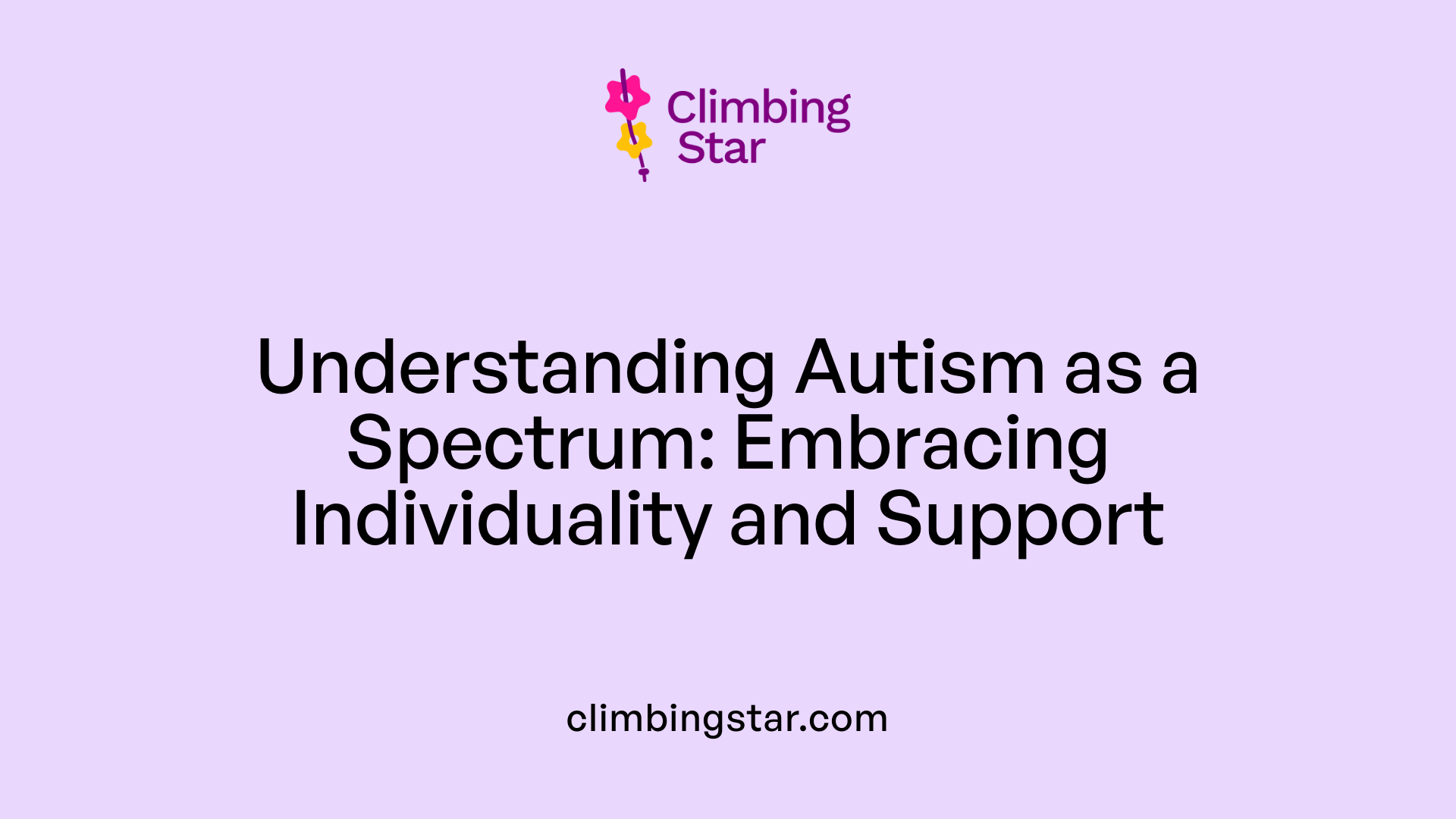Understanding Autism Spectrum Disorder and Its Public Perception
The question of whether a public figure like Tom Cruise is autistic often arises due to his roles, media portrayals, or rumors. This article explores the facts about autism spectrum disorder (ASD), the influence of media representations, and clarifies misconceptions related to celebrity disclosures. By examining credible information, we aim to provide a comprehensive perspective on the complexities of autism and the importance of respecting individual privacy.
Understanding Autism Spectrum Disorder and Its Diagnostic Spectrum
What is Autism Spectrum Disorder (ASD)?
Autism Spectrum Disorder (ASD) is a developmental condition that affects how a person perceives and interacts with the world. It is not a single, uniform diagnosis but a broad spectrum, meaning individuals can experience very different challenges and strengths.
ASD includes a range of behaviors, sensory sensitivities, communication styles, and social skills. The variability can be quite wide, with some individuals needing minimal support and others requiring significant assistance.
Different levels of autism (Level 1, Level 2, Level 3)
The spectrum is often categorized into three levels to help describe how much support a person might need:
| Level | Description | Support Needed | Details | | --- | --- | --- | --- | | Level 1 |
Media Portrayals of Autism and Their Influence

How is autism portrayed in media, and does Tom Cruise's work relate to this portrayal?
Media representations of autism are varied but frequently rely on stereotypes that do not accurately reflect the full spectrum of experiences. Common portrayals depict autistic characters as white males with extraordinary abilities, often called savants. These characters are portrayed as having exceptional memory, artistic talent, or mathematical skills, reinforcing the misconception that all individuals with autism possess these traits.
However, autism is a diverse condition affecting individuals in many ways. Not everyone on the spectrum has savant skills, and they often face challenges that are not represented in media stereotypes. Shows like 'Atypical,' 'Love on the Spectrum,' and 'The A Word' have made efforts to depict autism more authentically by showcasing everyday experiences, social difficulties, and emotional depth.
Despite these efforts, many media portrayals still lack cultural and gender diversity. They often reflect narrow, Hollywood-driven stereotypes that can reinforce misunderstandings about what it means to be autistic. When neurodiverse individuals are not included in the storytelling process, representations risk becoming inauthentic, further perpetuating stigma.
Regarding Tom Cruise, he is primarily recognized as a renowned actor with no direct public ties to autism awareness or advocacy. His role in 'Rain Man' (1988), while influential, was a film character rather than a reflection of his personal experience or an effort to depict autism realistically. Therefore, Cruise’s work does not directly influence autism portrayals, but the film itself played a significant role in shaping public perceptions.
The film 'Rain Man' helped introduce the term 'autism' to mainstream audiences and highlighted traits associated with the condition. Nonetheless, it also contributed to stereotypes by emphasizing savant-like abilities as the norm. As awareness grows, the emphasis is shifting toward more complex, accurate representations. Including autistic individuals in media production and storytelling is essential to portraying the diversity of experiences truthfully.
Efforts to improve authenticity in media include consulting with autism experts, featuring neurodiverse actors, and portraying a broader range of traits. These approaches help foster understanding, reduce misconceptions, and promote acceptance.
| Aspect | Typical Media Depiction | Reality | Additional Notes |
|---|---|---|---|
| Main focus | Geniuses, savants | Wide spectrum | Many autistic individuals do not show savant skills |
| Representation | Mostly white males | Diverse genders, ethnicities, abilities | Inclusivity improves accuracy and empathy |
| Emotional expression | Often stereotyped as unemotional | Show genuine emotional depth | Recognizes individual variability |
| Impact | Reinforces stereotypes | Promotes understanding | Needs balanced and varied portrayals |
How does diversity and misconception play a role in media depictions?
Media depictions often lack the diversity seen in the real autism community, including variations across gender, race, and ability. This narrow focus can reinforce stereotypes, such as the idea that autism only affects white males or that all autistic individuals are socially awkward geniuses.
In reality, autism affects a broad population with many different traits and challenges. Increasing awareness of this diversity helps break down stereotypes, fostering a more inclusive understanding.
Misconceptions can also arise from incomplete or sensationalized stories, leading to a distorted view of what it means to be autistic. The importance of authentic, diverse, and accurate portrayals cannot be overstated in promoting empathy and acceptance.
In conclusion, improving media representations involves collaborative efforts with autistic individuals and advocates, aiming to reflect the true breadth of experiences and challenges across the spectrum. This fosters a more informed society where understanding and acceptance can flourish.
Clarifying Common Misconceptions and Emphasizing Privacy

What does it mean that autism spectrum disorder varies widely?
Autism Spectrum Disorder (ASD) is not a single condition but a broad range of conditions that share some common features. People with ASD can have very different challenges and strengths. Some may need little support in daily life, while others may require significant assistance.
The spectrum is often divided into three levels:
| Level | Description | Support Needed |
|---|---|---|
| Level 1 | High functioning | Minimal support |
| Level 2 | Moderate support | More support for daily challenges |
| Level 3 | Significant support | Extensive help in daily activities |
Importantly, an individual’s placement can change over time, especially with early intervention and ongoing therapy. Some might move from a higher to a lower support level as they develop new skills.
Are there common co-occurring conditions with ASD?
Many individuals with autism also face other conditions, known as comorbidities. These include Attention Deficit Hyperactivity Disorder (ADHD), anxiety, obsessive-compulsive disorder (OCD), eating disorders, and depression.
Having multiple conditions can influence the type of support a person needs, but it also highlights the complexity of autism in each individual.
Does gender bias affect autism diagnosis?
Diagnosing autism can be more challenging in females and those outside the traditional male-female binary. Stereotypes often portray autistic individuals as socially awkward males, which can lead to underdiagnosis or misdiagnosis in girls and non-binary individuals.
This bias affects understanding and support, emphasizing the need for improved diagnostic criteria and awareness.
What stereotypes about autism are present in media?
Media portrayals often include clichés like the 'Socially Awkward Genius,' suggesting autistic people are all geniuses with no interest in social interaction.
Other stereotypes include the misconception that individuals with autism prefer to be alone or that autism is an unavoidable burden on families.
These stereotypes can be harmful, leading to misunderstandings about what autism really involves.
Can individuals with autism experience emotional depth?
Many people with autism have rich emotional lives and can feel empathy deeply. They might express or understand emotions differently compared to neurotypical individuals.
Understanding these differences is important for fostering respect and supporting social relationships.
How do labels impact people with autism?
Terms like 'high-functioning' or 'challenged' can influence self-esteem and how others perceive individuals with autism. Such labels might cause some to feel limited or stigmatized, which can impact their emotional well-being and social opportunities.
Using respectful, person-first language helps promote a positive view of their capabilities.
What does effective care involve?
Supporting someone with autism requires a personalized approach tailored to their unique needs. A multidisciplinary team—including therapists, educators, healthcare providers, and family members—works together.
This collaboration aims to develop strategies that enhance skills, independence, and quality of life.
What role did media like 'Rain Man' play in public understanding?
The 1988 film 'Rain Man,' starring Tom Cruise and Dustin Hoffman, was pivotal in bringing autism to mainstream awareness. The character Raymond was depicted as having autism and savant syndrome, which helped some people understand the condition.
However, the film also contained inaccuracies and stereotyped some traits, such as the idea that all autistic people are savants or geniuses.
Despite this, Dr. Darold Treffert noted that 'Rain Man' significantly increased awareness but also highlighted the need for accurate information.
How can misconceptions be addressed?
It is essential to differentiate between fact and speculation. For instance, there is no verified evidence that famous individuals, like Tom Cruise, are autistic. Claims about their health should be approached critically.
Currently, Tom Cruise has publicly acknowledged having dyslexia, which is different from autism. There are no credible reports or medical diagnoses suggesting he has autism.
Understanding the reality of autism, supported by scientific research, prevents the spread of myths and misconceptions. Promoting accurate information enables better awareness, acceptance, and support for individuals with autism or related conditions.
| Aspect | Details | Additional Insights | |---------|------------------------|---------------- Nutty | | Spectrum Range | Levels 1 to 3, changing over time | Reflects support needs and development | | Common Comorbidities | ADHD, anxiety, OCD, depression | Highlights complexity of ASD | | Gender Bias | Challenges in diagnosis for females |- Necessitates improved diagnostic tools | | Media Stereotypes | Genius, preference for solitude | Can distort perceptions | | Emotional Capacity | Rich inner emotional lives | Expressed differently | | Labels' Impact | Self-esteem and societal perception | Use respectful language | | Effective Support | Personalized, team-based approach | Focus on individual strengths | | Public Figures | Myths vs facts about diagnoses | Critical evaluation of rumors |
This overview emphasizes the importance of accurate knowledge and respectful representation concerning autism spectrum disorder, promoting an understanding that values individual differences and ongoing research.
The Influence of 'Rain Man' and Its Impact on Public Awareness

How did the film depict a character with Autism Spectrum Disorder (ASD)?
The movie 'Rain Man,' released in 1988, is a landmark film that brought the term 'autism' into mainstream conversation. It features Dustin Hoffman as Raymond, an autistic man with savant syndrome, and Tom Cruise as his brother, Charlie. The film portrayed Raymond as socially awkward, with intense routines and remarkable memory skills, reinforcing certain stereotypes while also making the condition more widely recognized.
Raymond's character was inspired partly by observations of individuals with autism, and the portrayal highlighted specific traits such as difficulty in social interactions and obsessive behaviors. While these traits are common in many on the autism spectrum, it is important to understand that autism is highly diverse. The film's depiction, though influential, sometimes exaggerated or simplified aspects of the condition, which impacted societal perceptions.
Kim Peek as inspiration and disclaimer
The character based on Kim Peek, often referred to as a prototype for Raymond, was portrayed as autistic in the film. However, Kim Peek himself had congenital brain damage, specifically to the corpus callosum, which is quite different from autism. Peek’s extraordinary memory and abilities were not representative of ASD in general.
Madeline Utter, a UCLA student involved in disability studies, researched and revised the Wikipedia entry about 'Rain Man' to clarify this distinction. Her work aimed to correct inaccuracies and provide a more scientifically accurate representation of autism, reflecting current understanding and research. Her efforts contribute to a more nuanced public perception.
The role of public figures and misconceptions
There is no verified information suggesting that actors or public figures, such as Tom Cruise, have autism spectrum disorder. Instead, their connection to ASD is through films or personal advocacy. The portrayal of Raymond was not meant to suggest Hoffman or Cruise had autism but to depict a character. Nevertheless, such portrayals can influence how society perceives autistic individuals.
While some praise 'Rain Man' for raising awareness, others criticize it for reinforcing stereotypes, especially the idea that all autistic individuals are savants or highly gifted. It’s crucial to recognize that autism is a spectrum, with varied experiences and abilities.
Impact on societal perceptions and ongoing discussions
'Rain Man' significantly increased public understanding of autism, inspiring conversations and research. However, the film’s sensationalized traits have also led to misconceptions that persist today. There remains a need for accurate representation and a broader understanding of the autism spectrum.
In sum, 'Rain Man' played a transformative role in autism awareness. Its portrayal, inspired partly by real individuals like Kim Peek, helped bring the condition into the spotlight but also highlighted the importance of accurate, responsible depictions. Continued education and research are essential to expanding society’s understanding beyond stereotypes and recognizing the diversity within autism.
The Complexity of Understanding Autism and the Need for Respect and Accuracy

Autism as a Spectrum with Varied Experiences
Autism Spectrum Disorder (ASD) is not a single condition but a diverse range of neurodevelopmental differences. It encompasses a broad spectrum of individuals with varying levels of support needs, abilities, and challenges. Traditionally, ASD levels are described as Level 1 ('High Functioning') requiring minimal support, Level 2 needing moderate support, and Level 3 demanding significant assistance. This classification helps understand that every person on the spectrum has unique needs and strengths.
Over time, an individual’s placement on the spectrum can change due to early interventions like therapy, educational strategies, and support systems. This flexibility highlights the importance of personalized care that adapts to each person's evolving profile.
Challenges of Diagnosis, Especially in Females and Non-Binary Individuals
Diagnosing autism can be complex, especially for females and those outside the male-female binary. Historically, diagnostic criteria and tools favored characteristics more commonly observed in males, leading to underdiagnosis or misdiagnosis in females. Females often display less overt signs of autism, such as fewer repetitive behaviors, or they may develop social camouflage techniques that mask difficulties.
Additionally, gender bias in healthcare and societal stereotypes can hinder recognition. This can result in delayed support, which impacts long-term outcomes. Increasing awareness and refining diagnostic practices are essential for more equitable identification.
The Importance of Accurate, Respectful Portrayals and Privacy
Media representations have a significant influence on public understanding of autism. Unfortunately, portrayals often rely on stereotypes, such as depicting autistic individuals as socially awkward geniuses or assuming all prefer solitude. Such images do not accurately reflect the spectrum’s diversity.
Notably, the film 'Rain Man' (1988), starring Dustin Hoffman as Raymond, introduced widely the concept of autism to the public. While it raised awareness, it also reinforced stereotypes of savant abilities being universal among autistic people. Moreover, the character was based on Kim Peek, who had brain damage, not autism—a misrepresentation that can lead to misconceptions.
It is important to portray autistic individuals with authenticity and nuance, respecting their privacy and dignity. Increasing involvement of autistic voices in media production helps produce stories that better reflect real experiences.
How is Autism Portrayed in Media, and Does Tom Cruise's Work Relate to This Portrayal?
Media depictions of autism are varied, but many still lean on stereotypes such as depicting characters as white male geniuses or savants. Shows like 'Atypical,' 'Love on the Spectrum,' and 'The A Word' have made strides in presenting more realistic narratives, though often without full cultural and gender diversity.
In Hollywood, inauthentic portrayals can happen when creators lack neurodiverse perspective, inadvertently reinforcing misconceptions or stigma. It is crucial to include autistic individuals in creative processes to foster accurate storytelling.
Regarding Tom Cruise, he is a renowned actor with no publicly known connection to autism advocacy. His work does not directly relate to autism portrayals. Thus, while he has starred in a famous film involving an autistic character—'Rain Man'—his career is independent of autism representation efforts.
Progress in media involves more authentic portrayals and the inclusion of neurodiverse individuals in storytelling. This effort helps reshape societal perceptions, moving toward a better understanding and acceptance.
| Aspect | Description | Additional Notes |
|---|---|---|
| Spectrum Range | From minimal support needs to significant support | Reflects individual variability |
| Diagnostic Challenges | Particularly in females & non-binary | Gender biases & camouflaging complicate diagnosis |
| Media Portrayals | Rely on stereotypes or authentic stories | Need for diversity & involvement of autistic voices |
| Public Perception | Heavily influenced by films like 'Rain Man' | Has both increased awareness and misconceptions |
| Representation Goals | Authenticity, respect, privacy | Inclusive storytelling, avoiding stereotypes |
Understanding autism requires recognizing its wide variability, combating stereotypes, and promoting respectful, accurate representations. Only through these efforts can society truly appreciate and support the diversity of autistic individuals.
Respecting Privacy and Promoting Accurate Understanding of Autism
In summary, there is no verified information to suggest that Tom Cruise has autism. While his role in 'Rain Man' contributed significantly to raising awareness about ASD, it does not imply any personal diagnosis. The world of autism is complex, encompassing a broad spectrum of experiences and challenges, often misunderstood through stereotypes in media. It is essential to approach claims about individuals’ neurodiversity with caution, respecting their privacy and focusing on scientific understanding. Moving forward, increased authentic representation and awareness can foster a more inclusive society that appreciates neurodiversity in all its forms.







